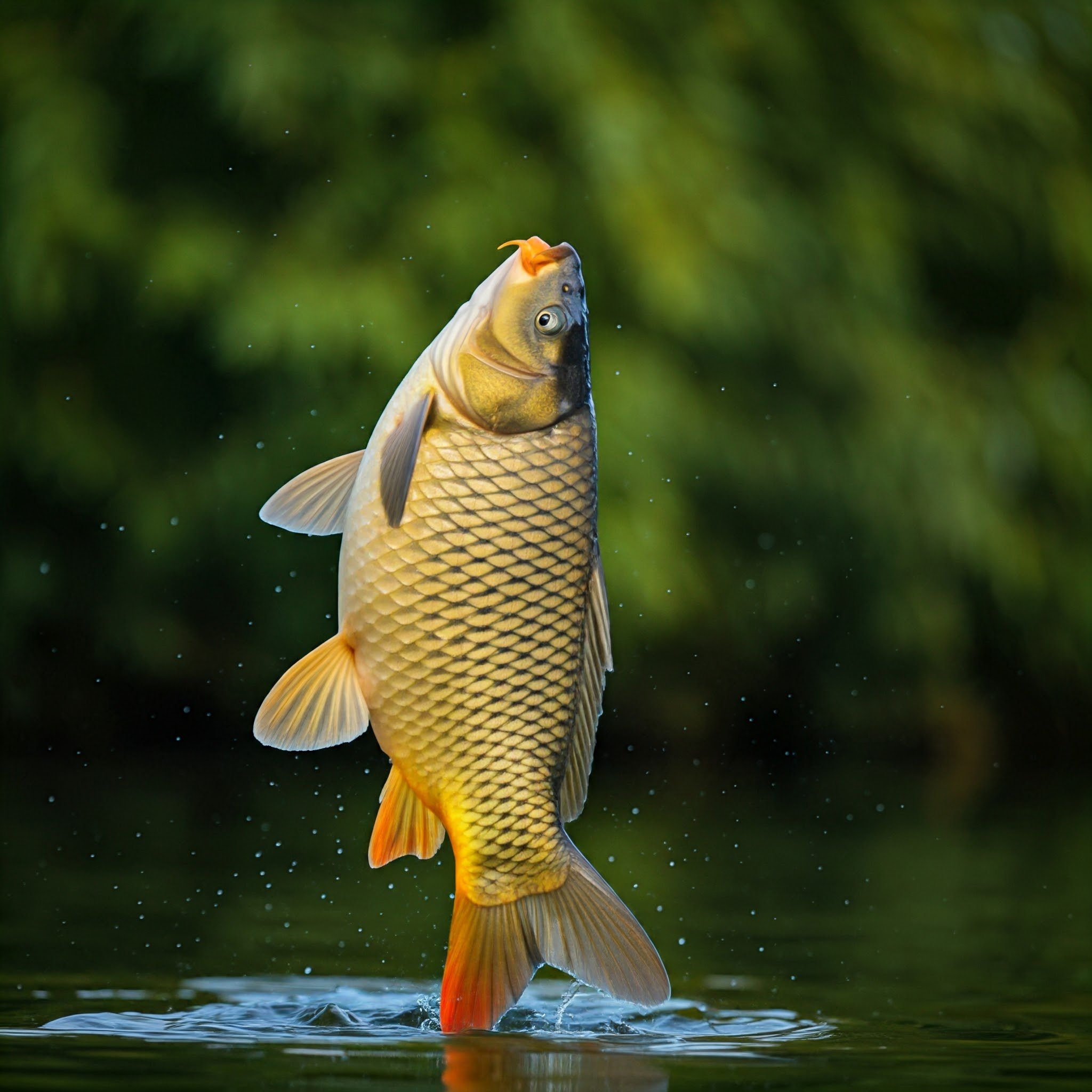Why Do Carp Jump?
One of the biggest mysteries in the carp angling world is the question of “why are they jumping?”. If you’ve spent any amount of time chasing carp, you will have seen carp leaping out of the water, sometimes breaching the water like a whale, sometimes leaping like a dolphin, and sometimes they jump straight up and down like a rocket that failed to launch. Let’s dissect this display of carp dominance, and how it impacts your fishing.
A pirate carp clearing the water.
Right off the bat, one thing I notice most anglers new to carp fishing do, is to cast where a carp just jumped. In some ways, this is understandable, you see a fish, why not cast. But, unfortunately, a jumping carp is not a feeding carp. Their jumping doesn’t even mean they’ll be where they jumped by the time you cast at them. When I’ve seen carp jumping from a high vantage point, they usually will cruise on after jumping, not staying in the same place that you saw them jump.
So what does a jumping carp tell you? A lot of things if you know what to look for. But to understand the different jump styles of carp, we need to understand some things that make carp unique from a lot of other fish we chase. Most fish, like a bass or trout, have air bladders that “automatically” adjust to air pressure changes, which is why they often take a day or two to acclimate after a storm system or a significant change in air pressure. This is why post-frontal days can be really tough when chasing bass; they're often not being very active since they are adjusting their air bladders.
Carp on the other hand, have to “manually” change their air bladders. This is accomplished by sucking in air, or jumping up and using the impact to push air out of their air bladders. The action of sucking in air is usually when they come up like a dolphin, with their mouth open and head completely out of the water. This is sometimes confused for when they come up and feed on the surface, but the main difference I’ve seen with the “sucking in air” action is that their head comes clean out of the water, and they seem to do it in one or two gulps.
A pirate carp sucking in air.
When carp push the air out of their air bladders, they jump up sideways and splash loudly down on the surface film. This is the kind of jumping you tend to see a lot, especially in the morning or evening, as the fish are changing depth. They are often loud, and it’s usually more than just one or two carp, often big groups of fish.
A pirate carp jumping splashily on its side to push air out.
The other style of jumping I see a lot, especially when there’s a lot of debris, algae, or mud in the water, the carp tend to jump straight up and down. Like a failed rocket launch. This seems to be when carp are clearing out their gills, or getting parasites off their scales. I see this too with trout in shallow lakes that have a lot of vegetation, the fish jumping directly up and down to clear out their gills.
A carp jumping straight up out of the water to clear its gills.
How does any of this information help you as an angler, if none of these situations are feeding fish? What jumping carp do tell you, especially when they’re jumping in the ways that indicate that they are adjusting their air bladders, is that they are on the move. The days when you don’t see carp jumping in the mornings usually have less fish moving up shallow, often I’ll see them jumping on the deeper edges of flats, near the drop offs, and then an hour or two later they’re up on the flats. If they’re staying in the deep water, you generally don’t see them jump. And when you’re looking for dry fly fish, jumping fish will also tell you that there are fish in the area, and at some point they might come up to eat things on the surface. So next time you see a carp jumping, please don’t cast at it for the rest of the day, but do observe it, and maybe it can help point you in the right direction.




